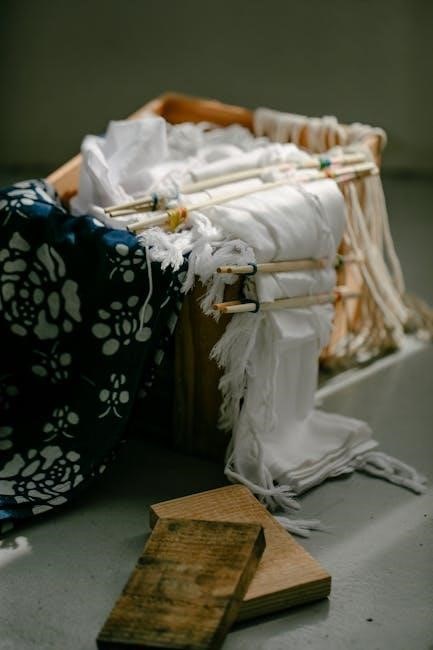Learning how to properly wash tie-dye is essential to avoid ruining your dyed fabric and other items. Tie-dyed items can bleed color, especially during the first wash. This section offers detailed tie-dye washing instructions for shirts, socks, and other fabric items, so don’t panic!
Initial Rinse: Removing Excess Dye
The initial rinse is a critical step in the tie-dye process. Rinsing removes excess dye and prevents staining. Improper rinsing can lead to backstaining, where loose dye particles redeposit on the fabric. This step can be tricky, but a few key tips can help.

Begin by rinsing the tie-dyed item under cold running water. Continue rinsing until the water runs clear; This step is essential to prevent colors from bleeding. Remove any rubber bands tied to the shirt for the best results.

Rinsing excess dye off the tie-dye is a critical part of the process. If not done correctly, you risk staining the fabric. Backstaining is the redeposition of dye particles on the shirt during the rinsing and washing process. This happens when water picks up loose dye particles and deposits them on another part of the fabric.
Give your shirts a pre-rinse under cold water to remove any excess dye. This helps prevent bleeding and keeps your colors sharp. Remove any rubber hands that remain tied to the shirt. Pro tip: Before tossing your shirt, make sure to perform this step!

First Wash: Washing Machine or Hand Washing?
After the initial rinse, the next decision is whether to use a washing machine or hand wash the tie-dyed item. Machine washes work best for most fabrics. While delicate fabrics like silk and rayon are safer to hand wash, most fabrics work best in a washing machine.
Machine washing is not only efficient but also covers all the programs required for fabric washing. Hand washing is ideal for delicate fabrics like polyester, silk, or rayon. If using a washing machine, protect delicate fabrics with a mesh laundry bag.
After the final rinsing stage, you need to wash the tie-dye fabric to remove any remaining loose dye. You aim to remove excess dye while preserving your design and bright colors. While you can always hand-wash it, we highly recommend using your washing machine for many reasons, including consistent water temperature and wash and rinse cycles.
The laundry detergent you should use will depend on the type of washing machine that you have at home; We highly recommend special, dye-safe detergent products if you have a top-loading washer.
Detergent Choice: Type and Amount
Choosing the right detergent is crucial for preserving the vibrancy of tie-dye. The laundry detergent used depends on the type of washing machine. For top-loading washers, a dye-safe detergent is highly recommended. Synthrapol detergent, a concentrated, industrial-strength formula, works well by rinsing excess dye without mixing colors.
Synthrapol removes excess dye powders without mixing them. Thus, you won’t have to worry about your multi-colored tie-dye shirts having the colors bleed together. Since Synthrapol detergent is sudsy, it is unsuitable for front-loading machines.
For front loaders, regular laundry detergent or dish soap like Joy and Dawn can be used. Use a small amount of mild detergent, avoiding bleach or fabric softeners. When washing tie dye for the first time, follow these six basic steps:
Just like washing other laundry items, fill your washing machine with the right amount of water. Then, add your detergent. The amount required is as follows:
Remember that you’re literally washing colored fabric; hence, choose laundry products that are color-safe. Aptly named, this type of detergent has color protectors to prevent fading.
Water Temperature: Hot vs. Cold

The water temperature plays a significant role in setting the dye and preventing color bleeding. Initially, rinsing the tie-dye item under cold running water is essential to remove excess dye. This pre-rinse helps prevent the dye from spreading and staining the fabric.
For the washing machine cycle, set the wash cycle to warm or hot since the dye ultimately sets better at this temperature. However, it’s important to note that while hot water helps set the dye, it can also cause more bleeding if excess dye remains. Setting the washing machine to a cold water cycle is also an acceptable solution.
After the initial hot or warm wash to set the dye, subsequent washes should be done in cold water to prevent the color from fading. Cold water will prevent the color from fading. Not only will this maintain the color’s quality, but it also ensures no dye leaches out from the tie-dyed garment.
Striking the correct balance between setting the dye and minimizing color bleeding is crucial for maintaining the vibrancy of your tie-dye creations.
Washing Tie Dye Separately
One of the most crucial steps in washing tie-dye for the first time is to wash the tie-dye item separately from other clothes to prevent color bleeding. Since you are trying to wash out excess dye, it would be best to wash the items separately. Doing so will prevent color bleeding to your other garments.
The first wash is definitely one of the most important washes because it’s when the most excess dye is released. Washing tie-dye garments separately ensures that any loose dye doesn’t transfer onto other clothing items. You can wash them together using the same colors if you’ve tie-dyed two or more items.
This is especially important for the first few washes until you are confident that the dye has been fully set and no longer bleeds. By isolating the tie-dye item during washing, you avoid the risk of staining other clothes and maintain the vibrancy and integrity of your tie-dye design.
Checking Rinse Water Clarity
During the washing process, monitoring the clarity of the rinse water is an important step to ensure all excess dye has been removed. Since the primary purpose of washing your tie-dye t-shirt and other items is to remove the excess or loose dye, expect that the rinse water will be colored.
Clear rinse water will indicate that you’re done washing your fabric. That’s why it’s best to peek through the machine’s glass door or slightly open its lid during the rinse cycle to examine the water’s color. Of course, there is a high chance that the water will still be colored during the first wash.
You need to repeat the entire washing process until the rinse water no longer looks colored. Depending on your detergent, you may need to repeat the entire process a few times. The secret is ensuring that the fabrics have enough room to move around so that the machine can efficiently wash off the loose dye.
Drying Methods: Air Drying vs. Machine Drying
After washing your tie-dye items, the next important step is drying. The best drying method is to air dry your tie-dyed items. Unlike when using a dryer, it will prevent shrinkage and damage. Air drying ensures the colors stay brighter for extended periods. Lay the shirt flat on a clean towel in a shaded area. Avoid direct sunlight.
If you still prefer to use your dryer and have a dryer-safe fabric, never use a dryer sheet. You must also use a medium or low heat setting, even if the fabric’s care label says you can dry it at high heat. Don’t hang tie dye items in an area exposed to direct sunlight when air drying. Otherwise, the tie-dye colors might fade, or your fabric might shrink due to the high heat. If you are drying multiple items, ensure they do not touch.
Long-Term Care: Maintaining Vibrancy
After learning the process and tips on how to wash tie dye the first time, you should also ensure that the quality and brightness of the colors are maintained for a long time. After all, you took time, effort, and money to learn how to tie dye. Keep the following tie dye care instructions in mind or share them with the person to whom you’re gifting or selling your tie-dye project.
Turning colored fabric, such as t-shirts, socks, and hoodies, inside out will help protect the color from fading. That’s because they’re not in direct contact with the detergent, the machine’s moving parts, and even the heat when air or machine-drying them. Cold water will prevent the color from fading. Not only will this maintain the colors quality, but it also ensures no dye leaches out from the tie-dyed garment.
Additional Tips and Tricks
Before you wash tie-dye for the first time, make sure you read this post ⎯ Ill show you how to wash tie-dye the first time so that the colors dont fade in the wash. How to Wash Tie Dye. The key to getting vibrant colors that dont wash out is twofold: setting the tie-dye long enough and washing it properly. So, what’s the best way to wash tie dye.
To prevent fading, hand wash your tie-dye shirt. Turn your tie-dye shirt inside out before washing to prevent color loss; Avoid drying your tie-dyed goods on high heat. Select Air Dry or a low or medium heat setting to preserve the colors. Wash your tie-dye shirt with other tie-dyed items or like colors.
Give your shirts a pre-rinse under cold water to remove any excess dye. This helps prevent bleeding and keeps your colors sharp. Remove any rubber bands that remain tied to the shirt.

